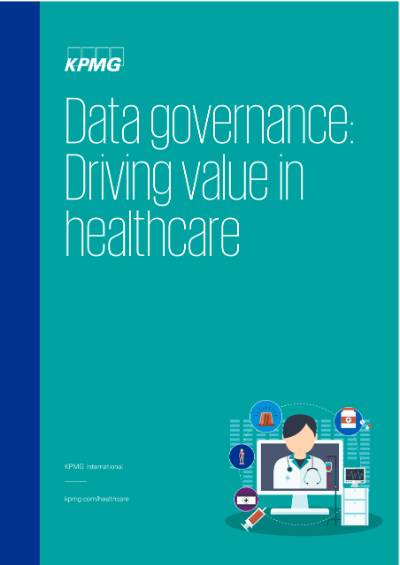The first step in the healthcare analytics journey
Healthcare systems and providers have become increasingly focused on the need to use evidence to inform clinical and operational decisions. This has led to them assembling and critically evaluating ever larger data sets around care delivery, performance, and cost. As health systems continue to adopt technologies to enable new or improved approaches to diagnosis and treatment, the size of our data sets will continue to grow.
The vast amount of data generated and collected by a multitude of stakeholders in healthcare comes in so many different forms —insurance claims, physician notes, medical records, medical images, pharmaceutical R&D, conversations about health in social media, and information from wearables and other monitoring devices. Data is growing faster than ever before and by the year 2020, about 1.7 megabytes of new information will be created every second for every human being on the planet (Forbes, 2015).
It is the scale of this data that sits at the very heart of the fourth industrial revolution and the impact it will ultimately have on the way we care for patients and communities in the future.
As healthcare environments become increasingly dependent on digital technologies to support care delivery (at a user, organizational and healthcare system level), their ability to use and exchange data becomes a critical enabler of transformation. In healthcare systems around the world, data and analytics (D&A) is re-shaping the way leaders make evidence-based decisions to improve patient outcomes and operational performance. However, despite the proliferation of data, most organizations find it hard to optimize data assets to deliver sophisticated and practical insights.
Tactical impacts and strategic value
When healthcare organizations implement new technologies to support business and clinical transformation, they typically focus on two levels of impact: the immediate tactical benefit of the technology on workflow and related key performance metrics; and the strategic benefit from taking newly available data and integrating it with and enriching existing data sets to create new value. Most tend to focus on the first set of benefits and neglect the substantial opportunities presented by the latter.
For healthcare organizations to truly realize the potential of data’s analytical power, they have to shift their approach to address both these levels of change. This document focuses almost exclusively on a frequently missed strategic opportunity that holds the greatest promise for transforming integrated care networks/systems: data governance.
The foundation of your strategy
Data governance defines how an organization manages its data assets, and, in a digital world, how improved decision-making should be operationalized. This calls for an appropriate authority model to manage data functions. Many healthcare leaders understand the importance of data governance, but struggle to:
- Understand where their data lives and how to access it
- Put in place effective processes to protect data from threats of inappropriate release and access; and
- Acquire and develop the right resources and skillsets to manage healthcare data.
To access the very latest thinking on the subject, we have gathered the experience of KPMG’s leading global D&A professionals and interviewed healthcare CEOs and CIOs to better understand their concerns and ambitions. Our framework for designing and implementing data governance aims to demystify the topic and helps to overcome common challenges and pitfalls, by outlining practical steps to effectively manage enterprise data assets.
First, we define data governance and its key elements. Appreciating the importance of data stewardship, ownership, policies, and standards lays the groundwork for sustainable governance. We highlight some of the typical data governance ‘traps’ that healthcare organizations fall into when beginning their D&A journey.
Next, we outline KPMG’s approach to structuring and implementing data governance, including roles and responsibilities, key data management capabilities, and critical success factors. Woven throughout, we provide case studies from our healthcare clients across the globe, sharing vital lessons learned.
Finally, we explore other important considerations, such as protecting information privacy (in the regulatory context), data sharing (both internally and externally), and enabling technologies for data management.
The first step in your data and analytics journey
In KPMG’s 2017 publication, A blueprint for success in healthcare data and analytics, we urged organizations and systems leaders to establish a D&A strategy. Harnessing the power of D&A in healthcare is a journey, and data governance is the first, critical step.
Download the full report (PDF 829.9 KB) to learn more about you can help your organization take the first step in their D&A journey.
Back to KPMG Global Healthcare
Connect with us
- Find office locations kpmg.findOfficeLocations
- kpmg.emailUs
- Social media @ KPMG kpmg.socialMedia



